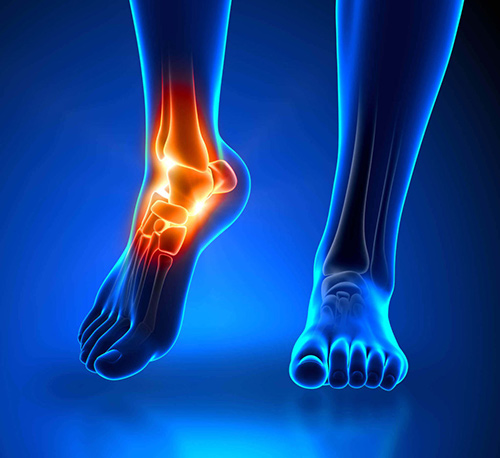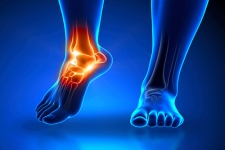
Overuse Injuries (especially in year-round athletes)
Overuse injuries are common in track athletes of any sport, but especially athletes who engage in sports, or a particular sport, year-round. This is common in high school athletes who jump straight from one sport to another, as track practice usually begins a week after the conclusion of winter sports. The NSAA has rules requiring rest from back-to-back sports seasons, but one week is not always enough, even for the most gifted athletes. Plus, many athletes still train intensely in their own time during this required rest period.
Jumpers Knee (Patellar Tendonitis): This injury is common for athletes in events that require jumping, such as hurdling and triple jump. The injury occurs when the patellar tendon—which connects the kneecap to the Tibia (shinbone)—becomes damaged and experiences tiny micro tears within the tendon tissue, causing inflammation. Athletes will experience weakness in the knee, will struggle when straightening the knee, and may experience instability.
Achilles Tendonitis: The Achilles is the large tendon that attaches the calf muscles to the heel bone. It’s also a common victim of tendonitis due to the sheer amount of force the tendon constantly bears. Painful micro tears may occur within the Achilles tendon leading to inflammation and swelling of the tendon.
The IT band run down the outside of the thigh, connecting the hip muscle to the knee.
Iliotibial band syndrome: The IT band run down the outside of the thigh, connecting the hip and glute muscles to the knee. Injuries to the IT bands are quite common in many people who engage in physical activity. Many of these injuries are simply due to inflexibility. A person will feel pain on the outer portion of the knee when the IT band becomes strained.
Shin Splints occur when the muscle and bone tissue along the tibia (shinbone) become exhausted from overuse, often from physical activity or repetitive motion. Flatfeet or abnormally high arches leave people more susceptible to shin splints, but wearing improper footwear is also a common cause of this condition. Shin split sufferers will experience a sharp or dull pain in the shin that worsens with exercise.
Plantar fasciitis: The plantar fascia runs along the bottom portion of the foot, connecting muscles along the way. It absorbs the daily stresses we place on our feet and can become damaged or torn when overworked. The area becomes inflamed and causes heel pain or stiffness along the bottom portion of the foot.
The first treatment option for any overuse injury is always rest and ice. Athletes may be required to wear an immobilizer (such as a walking boot) and almost always use non-steroidal anti-inflammatory medication. Specialized injections may be used for more severe or nagging cases.
Stress Fractures
Stress fractures are small cracks in the bone caused by overuse. Most stress fractures occur in the lower portions of the body that bear the forces of daily activity, such as the feet. The feet bear tremendous force during track and field events, leaving athletes susceptible to stress fractures. Like the overuse injuries mention above, stress fractures are first treated with rest. Shoe inserts, braces or immobilizers are often used in to accelerate the healing process.
Ankle Sprains and Strains
It does not matter if an athlete is a thrower or runner, all track and field athletes run frequently. With the low cut shoes and ample opportunities for injury, ankle sprains and strains are common.
Strains occur when a tendon, which anchor muscles to bones, is damaged. Sprains occur when a ligament, which attaches bones to other bones and stabilizes joints, is damaged, usually from an abnormal twisting or rolling motion.
Treatment options for sprains and strains are largely determined by the severity of the injury, which will be categorized based on three grades.
Grade 1: slight stretch
Grade 2: partial tear
Grade 3: complete tear
Nonsurgical options are the first step to treating sprains and strains, even for grade 3 injuries. Like overuse injuries, resting and protecting the injury is the first step, followed by restoring flexibility and strength to prevent future injuries. Surgical options may still be used if nonsurgical treatment is insufficient.

